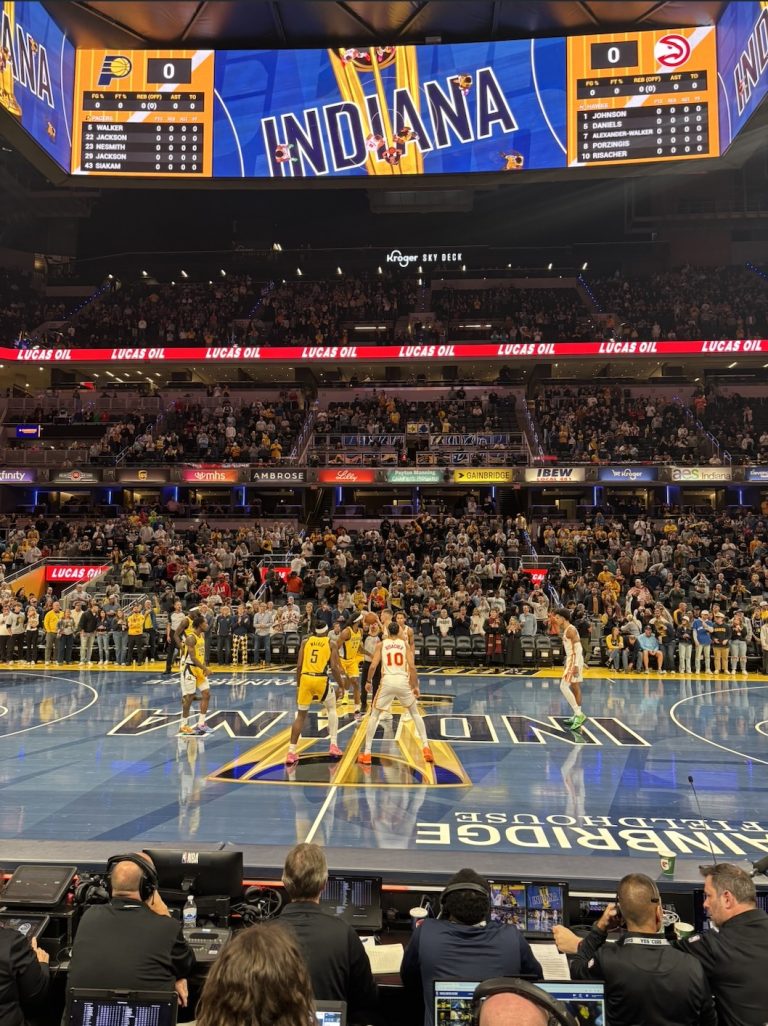The city of Indianapolis has a violent crime problem, specifically with homicides and gun violence. During the first two months of 2020, there have been 39 homicides as of The Reflector press time. Last year through Feb. 16, 2019 there were 16 homicides according to The Indianapolis Star. This increase in the number of murders this year is unacceptable and unfortunately has been a trend for the city. This year, Indianapolis has implemented new strategies to mitigate the violence, but these are only going to exacerbate already existing issues involving people of color and their disproportionate incarceration rate.
Reported violent crimes have increased from 10,768 in 2014 to 11,907 in 2016 in Indianapolis, according to the Federal Bureau of Investigation’s Uniform Crime Report.
Also, the number of homicides committed in Indianapolis has increased from 136 in 2014 to 162 in 2018, according to the FBI’s UCR. The program has not released a full 2019 report as of Reflector press time. This year’s homicide rate, so far, is nearly double 2019’s rate. This trend is dangerous.
Indianapolis Mayor Joe Hogsett, the Indianapolis Metropolitan Police Department and the U.S. District Attorney’s Office for the Southern District of Indiana have noticed this trend.
“There is at least one variable that is common to most homicides: a gun,” Hogsett said in a press conference on Feb. 19. He also announced a series of new strategies he is hoping will curb the violence and homicides. Increasing policing in the city is one of these strategies.
While I am glad that officials are taking steps to address the violence problem, my concern is that the practices and the way officials are going about this could lead to a larger incarceration of people of color, specifically black males in Indianapolis. I believe that Indianapolis will see people of color being arrested at higher rates for crimes that are not gun- or violence-related.
U.S. Attorney for the Southern District of Indiana Joshua Minkler said during the Feb. 19 press conference that the motives and the relationships between victims and suspects are unknown, and in some cases crimes are spontaneous.
Hogsett wants to increase the policing of specific neighborhoods and complexes. Most of the homicides committed in Indianapolis from 2014 to 2018 were committed in Wayne, Center and Warren townships, according to the Indianapolis Star article “These six graphics help explain Indianapolis’ homicide problem.” The population of Wayne township is 30% black people, Center township is 35% and Warren township is 36%, according to censusreporter.org, which used data from the 2018 census.
While increasing patrols may make these areas safer, a side effect of the increased police presence will be an increase in the arrest rates of people of color, especially black people in these townships.
According to a Washington Post article about “broken window policing.” It is the concept of small quality-of-life violations, keeps neighborhoods safe from more serious crimes, but overwhelmingly targets minority communities and police are more likely to arrest and use force on blacks and Latinos.
The same article found that less policing during a New York City Police Department slowdown has actually led to a decrease in civilian complaints of major crimes.
According to a website with great statistics, PrisonPolicy.org, which obtained its information from the 2010 U.S. census:
Indiana already has a higher incarceration for both jail and prison rate than the United States average. Not only that, but people of color already are overrepresented in prisons, especially black people. For every 100,000 black people in Indiana, 2,814 are incarcerated. For every 100,000 white people in Indiana, only 542 are incarcerated. This is despite the fact that black people make up only 9% of the population of the state compared to 82% of the population being white.
A study published in the August 2019 issue of the Ethnic and Racial Studies journal attributes the disproportionate incarceration rate to skin tone. According to this study, the darker skin tone a person has, the more likely he or she is to be arrested and jailed.
According to the Indianapolis Star, black males are four times more likely to be the victims of criminal homicides.
Hogsett plans to increase police presence in neighborhoods with large black populations because those are the locations of the majority of the criminal homicides in Indianapolis.
This leads me to believe that the officials’ only choice is to watch the demographics of those against whom crimes are being committed, which is predominantly black males.
While this may lead to a decrease in violent crime, I fear that it is just going to exacerbate Indiana’s already disproportionate prison populations. Indianapolis has a gun and violence problem that needs to be addressed.
I am glad the city officials are doing something about the situation, but it is going to give rise to other issues the state already faces. Indianapolis already awards grants based on evidence-based, violence-prevention services, and I believe the city should allocate additional resources toward these grants.
If Mayor Hogsett and the city invest more in these grants, then gun violence in Indianapolis will decline without the increased incarceration of people of color.






